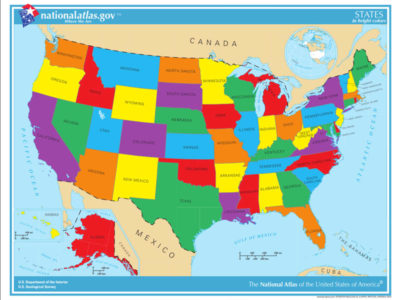Election 2020: State Legislatures
Legal Planet: Environmental Law and Policy 2020-07-27

The key political races aren’t just about the White House or Congress. Control of state legislatures will also be important in shaping climate and energy policy — not to mention their ultimate effect on the composition of the U.S. House due to redistricting.
One of my themes is the importance of state government to climate policy. The sad fact is that the political parties have opposing views on climate change, somewhat ameliorated because renewable energy has some support from Republicans. The Republicans have had a strong grip on state government since the early Obama Administration. That grip weakened in 2018, and there could be more to come in 2020. (Or not, of course.) And obviously, the coronavirus could upend everyone’s political assumptions. But here’s where we are now.
Let’s start with two states where Democratic control of the state legislature is a reasonable possibility.
- Arizona: Democrats need to pick up two seats for a majority in the state House and three seats in the Senate.
- Minnesota: Democrats need to win two seats for a majority in the state Senate. They won control of the state House in 2018.
There are several other states where Democrats are close to taking one house of the legislature. That wouldn’t allow Democrats to legislate, but it would give them a seat at the table. In particular, it would give them veto power over bad legislation.
- Iowa: Democrats would need to pick up four seats in the Iowa state House.
- North Carolina: Democrats need to pick up six seats for control of the state House.
- Wisconsin: Democrats are three seats away from a majority in the Wisconsin state Senate. That would give the Democratic governor a lot more maneuvering room.
- Michigan: Democrats need four wins to flip the Michigan Senate. As in Wisconsin, that would be a boost to the Democratic governor.
- Pennsylvania: Democrats are five seats from a majority in the Senate. They might also conceivably win a majority in the House, but that’s a heavier lift.
Florida, Georgia, and Texas are possibilities for gaining control of at least one house of the state legislature, but they would require a strong wave, since the Democrats would need to pick up at least ten seats.
From an environmental perspective, Arizona may be the most intriguing of the possibilities for flipping the legislature. It has long been a conservative stronghold, dating back at least to the days of Barry Goldwater. In terms of climate policy, Arizona has been backwards. According to the Energy Information Agency, “Nuclear power, coal, and natural gas provide almost equal shares of Arizona’s net electricity generation, and in 2017, together they fueled a total of 88% of the state’s utility-scale net generation.” There’s obviously a lot of room for improvement there. Polls suggest that Arizona is close to flipping in this election cycle.
A lot of this will depend on the strength of candidates and how much funding they get in swing districts. But a lot will depend on something out of their control: how well the Democratic presidential candidate runs in these states. These states are nearly all considered swing states in the Presidential election, so you can be sure they’ll be hotly contested.
The post Election 2020: State Legislatures appeared first on Legal Planet.